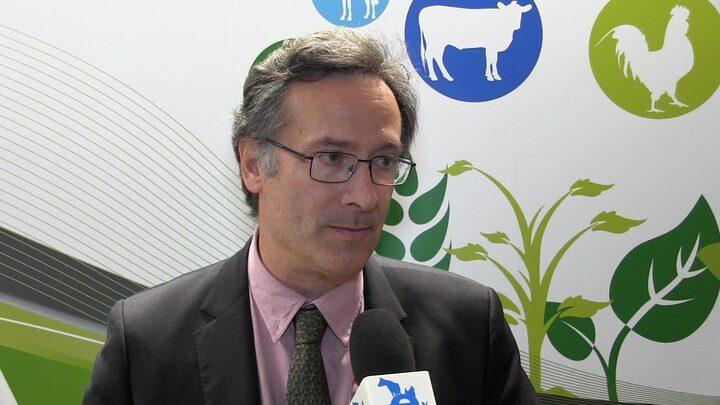Check out what is new in Poultry Industry
Find the best technical articles, forums, and videos on Poultry Industry at Engormix. Enter now and interact with the world's largest agricultural social network.
1. Introduction The permeability of the intestinal tract controls the uptake of nutrients and the transport of unwanted extracellular substances such as bacteria and xenobiotics, in addition to the non-digested substances. Therefore, gut health plays an essential role in the pathogenesis of various intestinal disorders. The permeability of the intestine is controlled by gut microbiota, digestive secretions, physical barriers (mucin, intestinal epithelial cells lining and tight...
Comments : 0
Recommendations: 1
INTRODUCTION Chicken domestication started with red junglefowl (Gallus gallus; ALBINO & TAVERNARI 2010) and is native to multiple regions in Southeast Asia (HATA et al. 2021). These birds were first used as fighting animals or in rituals. Then, breeding the species began to be treated as an economical activity to generate profit from the production of meat and eggs (NÚÑEZ-LEON et al. 2019, RUBIN et al. 2010). During this period, animal welfare...
Comments : 0
Recommendations: 1
Drinking water is one of the transmission methods of Avian Influenza (AI). Water sources can be contaminated by infected materials and transmitted to poultry farms. The risk of the chicken being exposed to the virus via water is high. When AI hit the poultry industry in the US in 2015, water samples were tested positive for the virus. Taking samples from poultry drinking water lines is an efficient way to conduct avian influenza surveillance. Water treatment is an important control strategy...
Comments : 0
Recommendations: 2
High stocking density and environmental factors such as acute heat stress, health challenges, bacterial or viral exposure, and mycotoxin-contaminated diets may cause serious stress of laying in modern intensive egg production systems. Laying hens under immunological stress are susceptible to pathogen infection due to an imbalance in immune response and cecal microbiota. Laying hens that are raised under the conditions of intensive farming and high stocking densities are exposed to...
Comments : 1
Recommendations: 1
.mp4&w=3840&q=75)
Nancy Collette and Emma Myers from VICAM's technical services team demonstrate Afla-V ONE lateral flow strip test capabilities for total aflatoxin testing in complete feeds.
...
Comments : 0
Recommendations: 1
.jpg&w=3840&q=75)
Guillermo Tellez-Isaias (University of Arkansas) explains how enzymes can further benefit the microbiota, during the Symposium on Gut Health in St. Louis, USA....
Comments : 1
Recommendations: 3
.jpg&w=3840&q=75)
Sebastian Decap (Plantae Labs) comments on restrictions and alternatives to control Coccidiosis, during the Symposium on Gut Health in St. Louis, USA....
Comments : 1
Recommendations: 0
Featured comment:

Md. Masd Rana Hello Mr. Masd Rana Thank you for your message. Heat stress is a significant economic threat to poultry industries, especially during summer and affecting the growth performance. Although the environmental variations are unable to control, Gano-met® can provide suitable precautions to protect the animals. ...
Comments : 25
Recommendations: 4
.jpg&w=3840&q=75)
Federico Ghiselli (University of Bologna) discusses his research on a blend of thymol, carvacrol, and saponins, as well as alternatives to anticoccidials, during the Symposium on Gut Health in St. Louis, USA....
Comments : 0
Recommendations: 0
.jpg&w=3840&q=75)
Mike Kogut, Chair of the Organizing Committee, comments on the event's success and announces the dates of the next edition....
Comments : 0
Recommendations: 7
Studies in the past decade have shown that Cordyceps militaris has multiple pharmacological functions, including anti-oxidant, anti-inflammatory, antimicrobial, anti-tumor, and anti-angiogenic activities and immunopotentiation ability. The chemical structure of cordycepin is similar to that of adenosine. Cordycepin can be used as a nucleotide during RNA synthesis, which leads to premature termination of chain elongation because of the absence of oxygen in the 3′...
Comments : 0
Recommendations: 1
Introduction Protein is a major component of animal tissues and products. Thus, adequate intake of dietary protein is essential to optimise growth, production performance, and feed efficiency in poultry. Soybean meal is most commonly used protein source and used around 20-30 % in poultry feed. Now days protein feed ingredients like soybean meal are consistently increasing in cost; so protein has become one of the most expensive nutrients in poultry diet. After feed consumed by...
Comments : 1
Recommendations: 1
Introduction The influence of seminal plasma on sperm storage may vary among species. Its removal is recommended in the majority of semen cryopreservation protocols of species such as caprine in order to ensure maximal sperm viability [1], but it isn’t entirely recommended in other mammals (e.g. ovine; [2]). Mammalian seminal plasma may contain factors that influence resistance of sperm to cold-shock damage and may prevent cryoinjury [3–5]. Conversely, detrimental...
Comments : 0
Recommendations: 0
INTRODUCTION Poultry and poultry products represent a popular choice of protein in the United States, with increasingly high consumption rates over the past years (Zhang et al., 2018). Poultry meat has surpassed both pork and beef in per capita consumption in the United States (USDA Economic Research Service, 2020). With this increased consumption of poultry and poultry products, there is a significant concern for contamination, thus impacting public health. Salmonella and...
Comments : 0
Recommendations: 0
INTRODUCTION Amino acids (AA) and crude protein (CP) intake during the rearing phase in broiler breeders have demonstrated to affect body composition and reproductive performance in the laying period (Joseph et al., 2000; Ciacciariello and Tyler, 2013; van Emous et al., 2013, 2015a, 2015b). Modifications of these nutrients added up to the adjustment of feed allocation may alter BW (van Emous et al., 2013; Soumeh et al., 2018), organ development (Lesuisse et al., 2017), egg...
Comments : 1
Recommendations: 0
The majority of pig and poultry diets are composed of about 70% maize or wheat, 20% soybean meal or other similar protein sources, and 10% micro-ingredients. Although this is a simplification, it illustrates the point that the majority of pork, poultry, and eggs are produced using a limited range of ingredients. In addition, it is important to note that feed cost is about 60-70% of overall production cost. And, as feedstuff prices continue to be prohibitively high, with detrimental...
Comments : 1
Recommendations: 3
Featured comment:

Dear Luis, in the last few years, we had a close look at the quality of different protein-rich feed ingredients and we developed NIR calibrations which can now be used locally to estimate the quality. The reactive Lys to Lys ratio is a good indicator for over-processing and it works in Soybean products, but also in Canola Meal and DDGS. In Canola it might be worth to check in addition the levels of Glucosinolates and Erucic acid. It should be low, but it's better to check it. All...
Comments : 18
Recommendations: 4
Introduction Conventional systems (battery cages) lead commercial egg production worldwide due to their reportedly efficient disease prevention processes (WHILEY; ROSS, 2015). However, shifts in egg consumption have drawn attention to potential animal welfare issues and generated demand for alternative laying systems with improved hen wellbeing. In this way, free-range systems could be an ideal choice for egg production and hen welfare (JONES at al., 2012); however, despite...
Comments : 0
Recommendations: 0
I. INTRODUCTION Phosphorus (P) is a critical nutrient for growth and structural integrity of growing animals. Nutritionists generally tend to use a significant margin of safety while formulating commercial diets to avoid any deficiency symptoms. A large variation appears to exist in P requirement estimates/recommendations for broiler chickens across different sources; e.g. summarizing some selected references, Table 1 shows the highest vs. lowest estimates to differ by...
Comments : 0
Recommendations: 0




.jpg&w=3840&q=75)



.jpg&w=3840&q=75)




.jpg&w=3840&q=75)

























